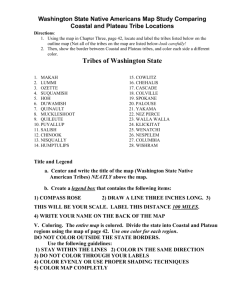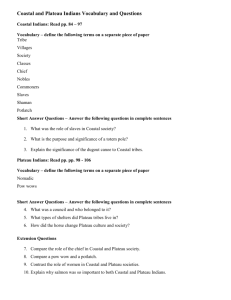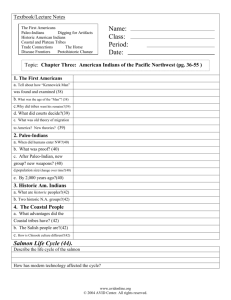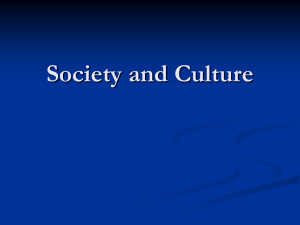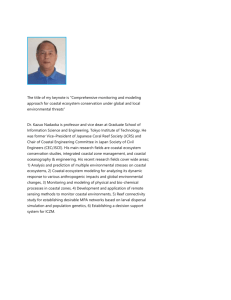Notes for Washington State History: Chapter 2, Lesson 1 Priority
advertisement
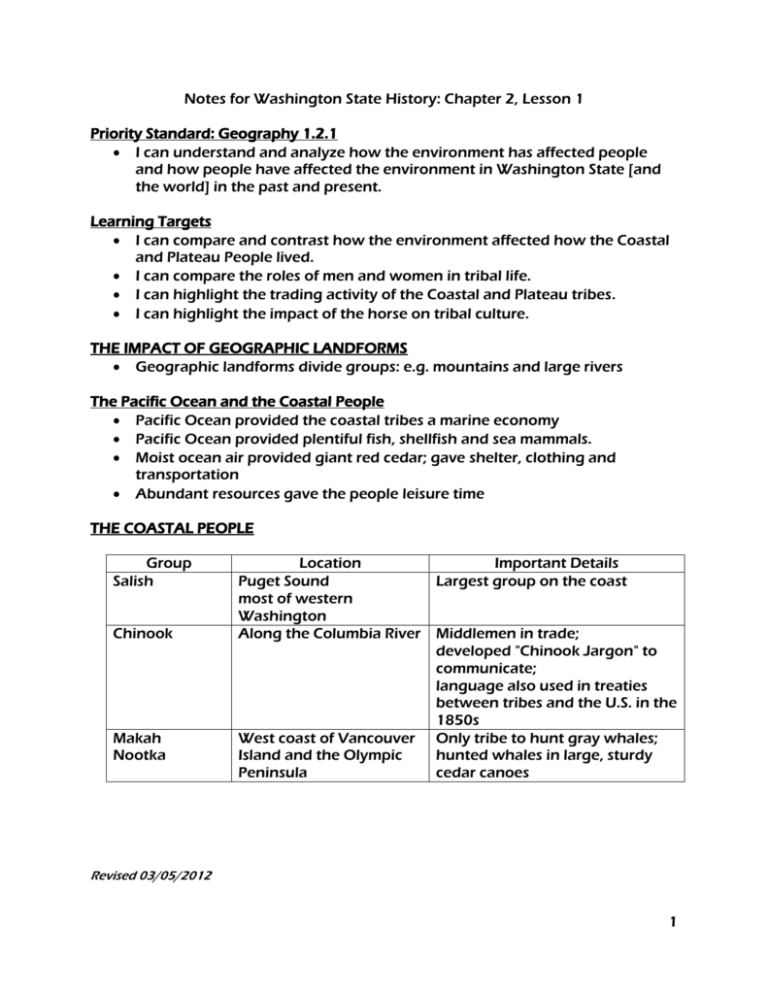
Notes for Washington State History: Chapter 2, Lesson 1 Priority Standard: Geography 1.2.1 I can understand and analyze how the environment has affected people and how people have affected the environment in Washington State [and the world] in the past and present. Learning Targets I can compare and contrast how the environment affected how the Coastal and Plateau People lived. I can compare the roles of men and women in tribal life. I can highlight the trading activity of the Coastal and Plateau tribes. I can highlight the impact of the horse on tribal culture. THE IMPACT OF GEOGRAPHIC LANDFORMS Geographic landforms divide groups: e.g. mountains and large rivers The Pacific Ocean and the Coastal People Pacific Ocean provided the coastal tribes a marine economy Pacific Ocean provided plentiful fish, shellfish and sea mammals. Moist ocean air provided giant red cedar; gave shelter, clothing and transportation Abundant resources gave the people leisure time THE COASTAL PEOPLE Group Salish Chinook Makah Nootka Location Puget Sound most of western Washington Along the Columbia River West coast of Vancouver Island and the Olympic Peninsula Important Details Largest group on the coast Middlemen in trade; developed "Chinook Jargon" to communicate; language also used in treaties between tribes and the U.S. in the 1850s Only tribe to hunt gray whales; hunted whales in large, sturdy cedar canoes Revised 03/05/2012 1 The Homes of the Coastal People basic building material was wood, usually red cedar split into planks to build homes and ceremonial lodges longhouses: long dwellings made from overlapping cedar planks Planks, shavings covered dirt floors related families all lived in a longhouse facing the sea The Coastal People's Social Structure basic social unit the extended family social ranking decided by wealth wealth: canoes, tools, weapons, skins wealthy may have had slaves group leaders usually wealthy rule by council, not single person order of importance: 1. chiefs 2. nobles 3. commoners 4. slaves slaves usually stolen women and children slaves lived with family; did the hardest work slaves sometimes sold THE PLATEAU PEOPLE The Plateau People's communities were different from coastal tribes hot, dry summers and cold winters forced them to move more often Pit Homes more permanent used until early 1800s partially below and above ground walls made of tall poles large notched pole in the middle used as a ladder groups would help build a home Tule Homes after 1800s tule (tu-lee) used grass-like plant from swamps bunches cut, dried, laid flat side by side ends tied to make mats tied to frames and overlapped Revised 03/05/2012 2 Roles and Responsibilities of Men and Women Men ~Fished and hunted ~Made tools and weapons ~Built homes ~Went to war ~Needed permission to take food Women ~Gathered roots, berries ~Dried meat and fish ~Prepared animal skins ~Made clothing ~Cared for young children ~Great deal of equality ~Could reject marriage ~Sometimes could propose marriage ~Had greater authority ~Food the woman's property TRADE CONNECTIONS Trading at intertribal fishing sites such as Kettle Falls, not far from Colville Trading also at camas gathering fields (camas an edible flowering plant) Exchanges could be ritual gifts, bartered goods or items won during gambling Coastal and Plateau tribes traded with each other primarily at Celilo Falls (present day The Dalles) Trade enriched lives but also brought deadly germs, killing many THE HORSE Brought by the Spanish; by mid 1700s the horse is in the Northwest Plateau tribes, especially the Nez Perce and Cayuse had extensive grazing land and had large herds Coastal tribes had little use for horses Changed Indian life; could travel longer distances and bring back food Some tribes began to travel to the Great Plains to hunt buffalo Greed for horses caused more conflict Tribes such as the Shoshoni and Klamath became fierce slave and horse traders Revised 03/05/2012 3
